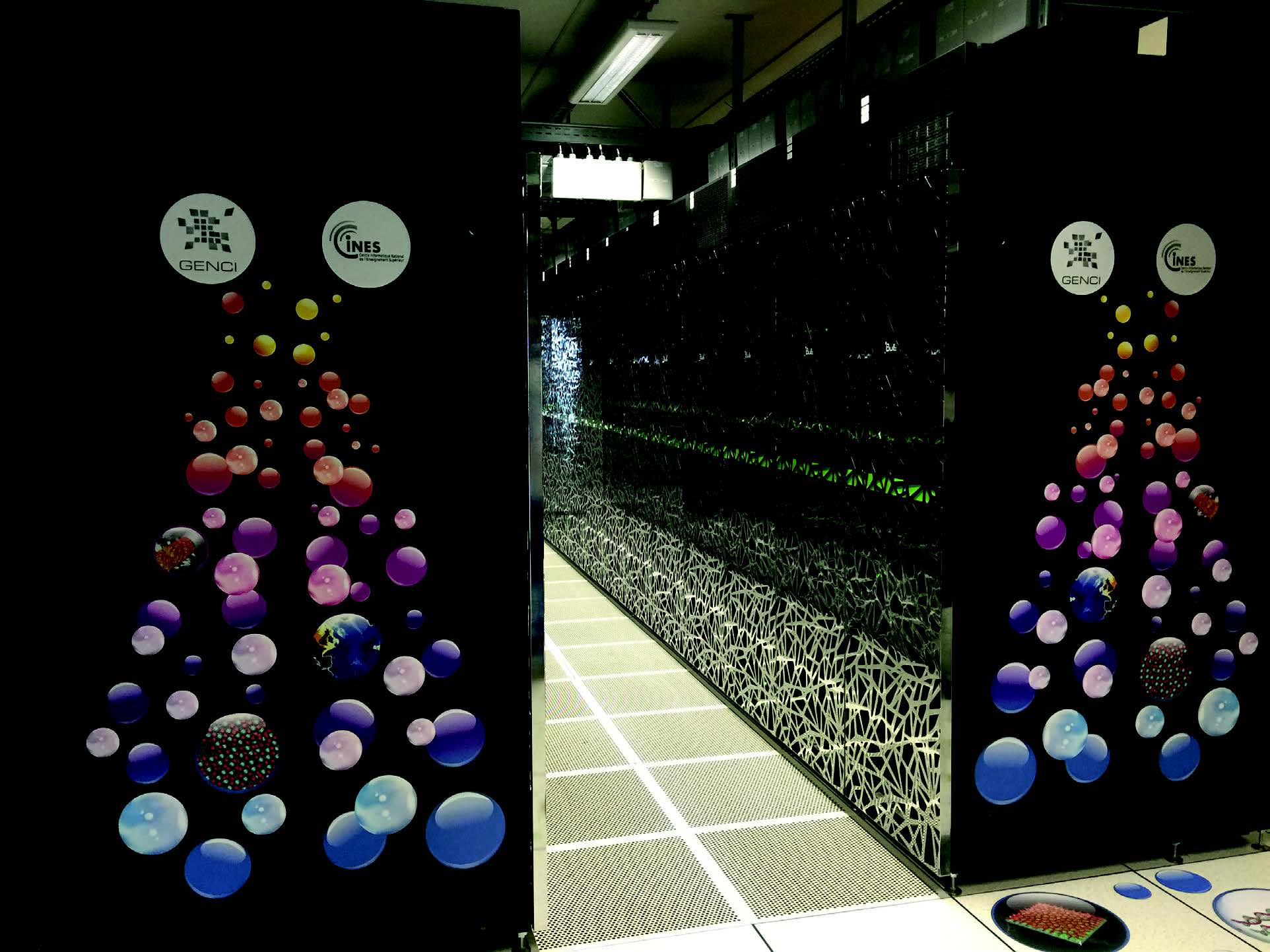Paris, April 28, 2020
Two of the most effective supercomputers in France, Joliot-Curie, operated at the CEA’s supercomputing heart (TGCC), and Occigen, operated at CPU’s supercomputing heart (CINES), are providing urgent computing accessibility to large laptop or computer resources to European investigation teams associated in the combat in opposition to COVID-19. The goal is to perform epidemiological reports of COVID-19 virus distribute, understand its molecular composition and actions and massively screen and take a look at likely future molecules, to accelerate the research for an helpful vaccine and guidance the global combat in opposition to the virus. Both equally supercomputers are based on Atos’ BullSequana system, global chief in electronic transformation.
Just after only a number of months of GENCI’s COVID 19 fast track accessibility, GENCI, the French national higher-effectiveness computing agency, announces that there are now a lot more than 20 scientifically numerous COVID19 assignments, running on its 3 national supercomputers amongst which are Joliot-Curie and Occigen, together with Jean Zay at IDRIS, with the focused help of guidance teams in these centers.
Joliot-Curie at TGCC
Joliot-Curie, with its 22 petaflop/s, is the most effective supercomputer in France focused to educational and industrial open investigation. As component of PRACE (Partnership for Highly developed Computing in Europe), European researchers are relying on Joliot-Curie to operate these days a few COVID-19 large scale assignments in the context of the PRACE COVID-19 Quick Keep track of connect with. One particular undertaking simulates the functional proteins of the SARS-CoV-2 virus developed from hundreds of thousands of atoms to understand the mechanisms of the virus infection in get to develop therapeutics. The other undertaking uses computational screening, a perfectly-acknowledged procedure applied in drug discovery, to discover and improve viral protein inhibitors, molecules which are able of blocking the SARS-Cov-2 protein. This undertaking could help supporting the improvement of a treatment to gradual down the COVID-19 outbreak.
The very last undertaking combines the study of the impact of antimalarial prescription drugs on numerous human heart rate styles getting into account a wide range of comorbidities that may well be present in the contaminated inhabitants, and also uses computational fluid dynamics (CFD) to far better understand the elaborate hemodynamics involved with Nord-South Syndrome.

In addition to these PRACE COVID-19 Quick Keep track of assignments, teams of researchers are carrying out preparatory simulations on priority national allocations of computing capability on the Joliot-Curie supercomputer. For example, researchers from the Grenoble Interdisciplinary Investigate Institute (IRIG) and the CEA’s Joliot Institute are performing on the research of inhibitors in COVID-19. The SPIKE protein makes it possible for the virus to penetrate the mobile membrane. Many thanks to the simulation of the digital composition of the protein and the involved inhibitor, it is achievable to supply specific info on the power of the inhibition but also structural info to discover the amino acids worried and their involved polarities. This initial work created it achievable to validate the tactic and hence to post a fifteen-million-hour undertaking to PRACE to study the microscopic and thermodynamic things that may well or may well not favour the interaction involving the primary SARS-CoV-2 protease and promising new inhibitors. The objective is to construct an ab initio in silico resource to estimate correctly the interaction homes of proteins interacting with all styles of ligand households.
Occigen at CINES
Among the the COVID-19 connected assignments on Occigen, researchers are running simulations to study the SARS-Cov-2 helicase enzymes in additional depth, in get to far better understand the genetic make-up of the virus. It is also remaining massively applied – day by day outside of forty,000 cores, all over fifty percent of the full Occigen’s capability shaped by 86,000 cores for 3.5 petaflop/s – with computational screening procedures, to almost take a look at a lot more than one.5 billion molecules a thousand of which will be synthesized and analyzed in labs for their skill to inhibit SARS-Cov-2. The scale of this virtual testing is unprecedented and is only created achievable due to the computing electricity of the supercomputer.

Stephane Requena, CTO of GENCI, claimed: “We’re happy with the 3 national centers to be in combat in opposition to COVID-19 and that our effective supercomputing and AI capabilities are remaining applied by researchers to lead to these efforts. We hope that these computational results from the 20+ assignments presently running on our techniques, will guidance researchers and researchers to understand a lot more about the virus and ultimately help develop a treatment to halt this pandemic.”
Pierre Barnabé, Head of General public Sector & Defense and Head of Big Info & Cybersecurity, Atos, included: “We are honored to guidance people researchers and researchers in their work to help combat in opposition to COVID-19. By applying the capability of our BullSequana supercomputers, which operate hundreds of times more rapidly than standard desktops, we are enabling them to conserve beneficial time and aiding uncover a cure to this pandemic.”
Christine Ménaché, Head of the CEA’s Quite Substantial Computing Centre (TGCC) and Boris Dintrans, Director of CINES jointly state: “All the TGCC’s and CINES’s guidance teams have been mobilized in a solid spirit of solidarity to satisfy the expectations of all buyers and in unique these scientific assignments in relationship with Covid19.”
Supercomputers have tens of hundreds of processors that work together to perform large calculations, process and review large amounts of information applying AI algorithms. GENCI’s altogether combined supercomputing techniques depict these days a lot more than 41 petaflop/s of computing capability and a hundred petabytes of large information storage.








More Stories
The importance of retail experience design; Designing a valuable retail experience
How to E-A-T Ethically with Digital PR
What is a marketing plan? Create your 7 step plan [Free guide]